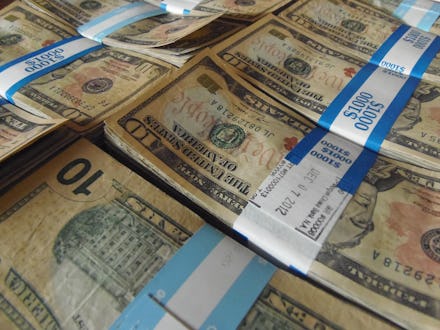What's a 401(K)? Why You Should Start Saving for Retirement Right Now

It's a distant but looming reality: retirement. For the millennial generation (who are already carrying the weight of the student loan debt crisis), retirement is looking bleak. With inflation, fewer millennials setting aside money for pension plans and a Social Security system that's increasingly insecure, millennials will have to "aggressively" save a life crisis-spurring amount of $1.8 to $2.5 million to keep up their standard of living during retirement, USA Today reported on March 29.
But 29% of millennials are not saving any money on a monthly basis, and only 28% of those age 25 to 34 are putting money into a pension plan, CNBC reported in February. A 2015 report by J.P. Morgan Asset Management found that millennials have lucked out by having to "finance retirements that are longer than the number of years they work," according to CNBC.
But experts insist that despite what our long-term financial goals may be, the time to start saving the green is in our twenties. The average millennial would need to start saving between 4% and 9% of their gross income per year by age 25 (assuming some monthly income is also saved and some pretax savings are matched by the employer) to keep up the same income during retirement, according to the J.P. Morgan report.
Read more: Starting Your Resolutions? This CEO Explains 15 Things Young People Should Know About Money
What's a 401(k)? But for many young people, the term 401(k) remains an abstract financial term that's tossed around when talking about retirement. Named after a part of the tax code, 401(k) plans are the most popular form of retirement savings, outdoing pension plans, according to the Wall Street Journal's 401(k) guide. With a 401(k), a decided amount is deposited from the worker's pretax paycheck into a separate account. Often it's matched by the employer.
If you have a $50,000 salary, the Wall Street Journal estimates, a 3% contribution would be $1,500 (at least) from you and $1,500 from your employer if it matches. The government doesn't allow you to contribute more than $53,000 or your entire income to the 401(k) per year.
There are two types of 401(k) plans, outlined in the Wall Street Journal's guide: traditional 401(k) and Roth 401(k), with the former being the more common of the two. Unlike the Roth, which uses income that has already been taxed and is more flexible, the traditional 401(k) plan uses pretax contributions and you most likely can't access the funds until your 50s (or else face a penalty fee).
If your company ends up shuttering its doors, the Wall Street Journal states, your 401(k) is safe and will turn into a traditional IRA, which is another type of retirement savings.
Some experts recommend that the magic number for your 401(k) contribution is 15%, according to Forbes. If that's too big of an amount, they suggest working your way up by 1% increments from a starting point of maybe 5%.
Basically, cutting down on your current spending and slipping some money away will not only eventually be unnoticeable, it could mean an extra six figures in your retirement fund, Forbes reported.
Your future self will thank you.